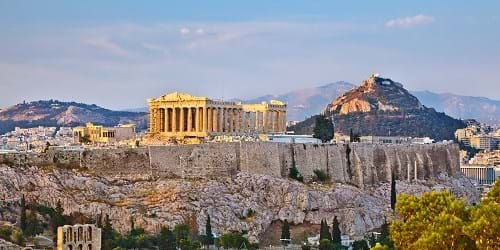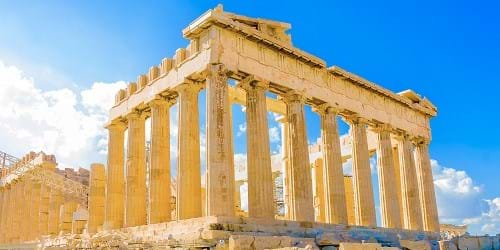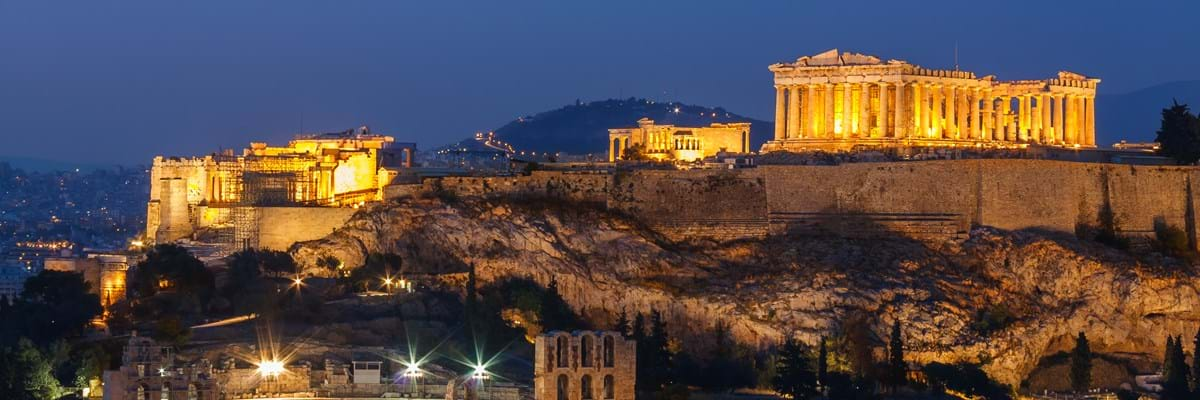The Acropolis is the crown jewel of Athens, a city bulging with precious gems of history. Go there and you can’t miss it. The rocky citadel rises almost 500ft above the city, its white marble gleaming in the sun.
Over 2 million people a year visit this world heritage site (see other UNESCO heritage sites in Greece) and its amazing temples that were built about 2,500 years ago.
The incredible back story bedazzles too. More than 3,000 years ago a Mycenaean Palace stood on the flat top of the citadel. A thousand years later the Persians invaded and destroyed much of what was there.
Once the Persians were overthrown the Ancient Greeks spent decades in the fifth century BC building temples, shrines, gateways and walls.
That was the Golden Age of Athens when the city was the world’s seat of democracy, philosophy, art and architecture. Statesmen and designers laid the foundations of much that the modern world still cherishes.

Since then the buildings on what is known as the Holy Rock have been used as churches, barracks, stores and even a harem. The Acropolis of Athens has been under siege three times and cannon fire once triggered a huge gunpowder explosion.
Weather conditions, pollution and earthquakes have added to the problems. Lengthy and expensive periods of restoration have gone on since the 19th century. The current project is scheduled to end in 2020 after more than 40 years and a cost of tens of millions of pounds.
The United Nations Educational, Scientific and Cultural Organisation (Unesco) says The Acropolis has a unique beauty and describes it as “the most striking and complete Greek monumental complex still existing in our times”.
In 2019 the full admission price was 20 euros. Try to avoid the queues by arriving before the tour buses arrive – or after they have left.

Visitors walk in the footsteps of history before they reach the entrance. The Theatre of Dionysos, the oldest theatre in the world, and the Odeion of Herodus Atticus, still used as a theatre 2,280 years after it was built, are on the slopes.
What you don’t see is the 40ft bronze and gold statue of Athena, goddess of warfare and wisdom (see our article on Greek Gods), that once towered above the citadel.
It was said that ships many miles away could see the sun reflected from the statue’s gold-tipped spear. It is believed the statue was sent to Constantinople where it was destroyed by Crusaders in the Middle Ages.
Date last updated:



